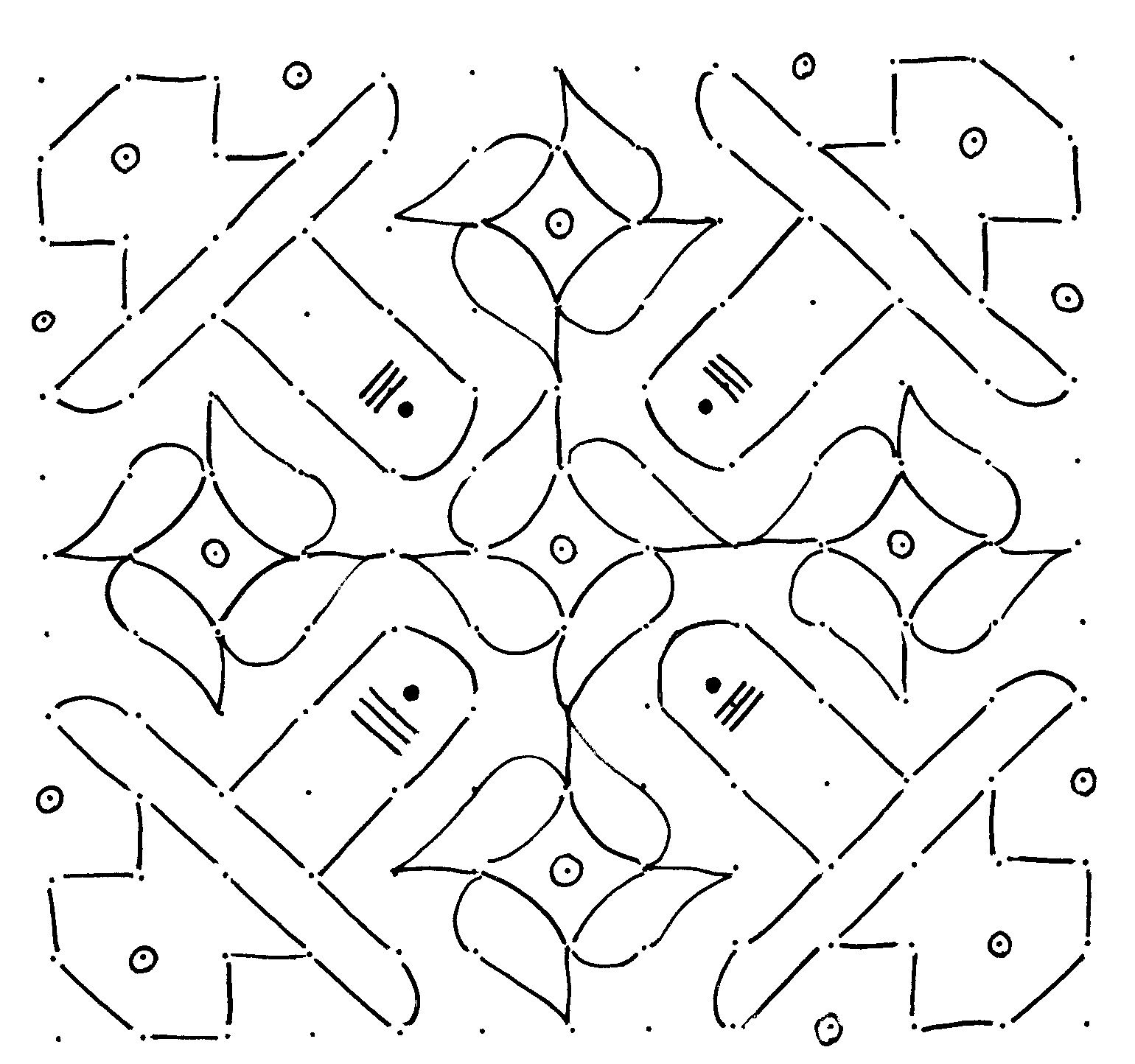Shivaratri, the night of Shiva — part 2
In his most subtle form, he is equal to the undifferentiated Absolute, and when he voluntarily creates, it is together with Shakti, his equally powerful feminine counterpart. In a cosmic dimension, Shiva the Absolute, takes the form of a phallic-shaped lingam.
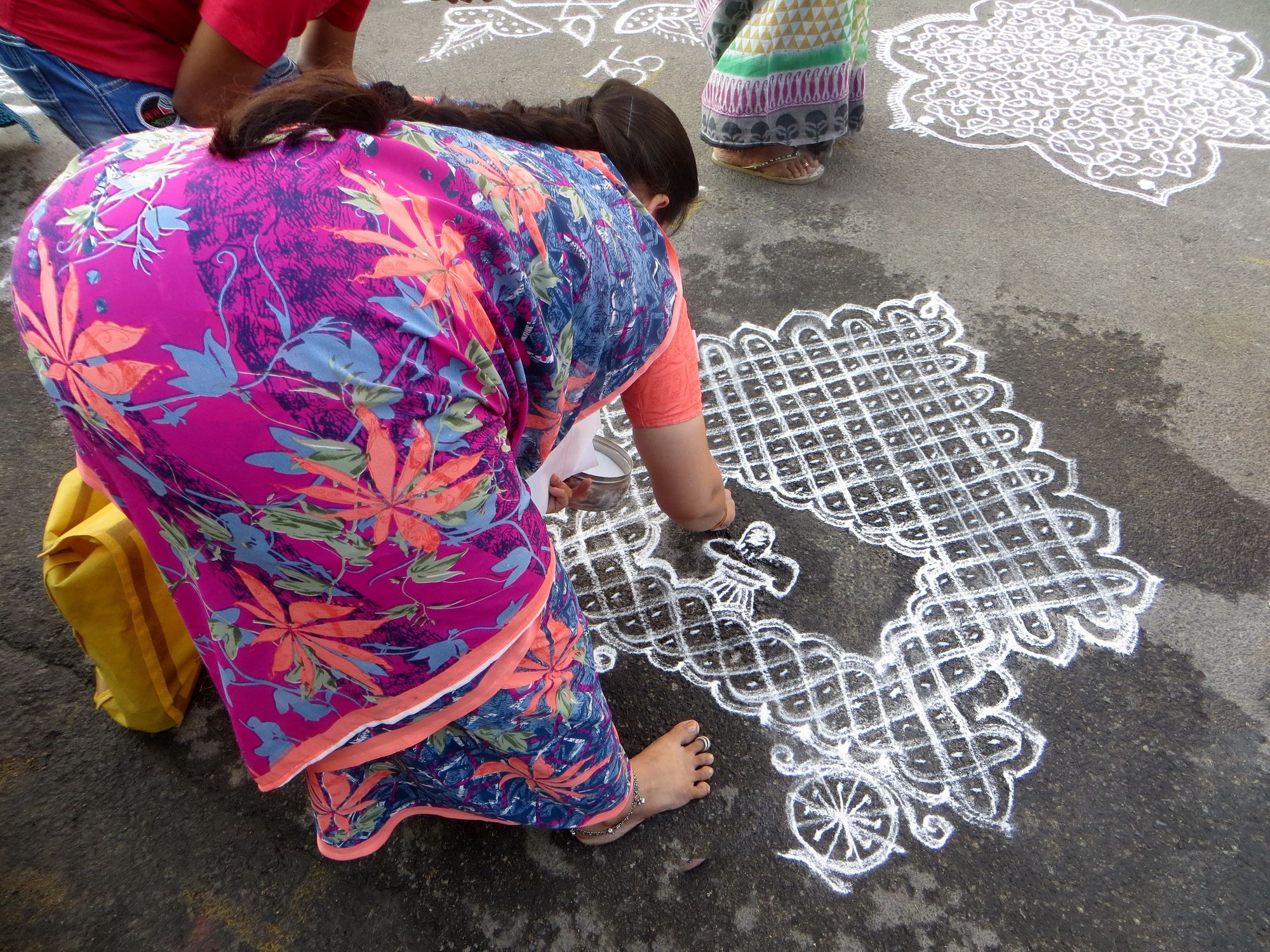
Lingam, the cosmic dimension of Shiva
In his most subtle form, he is equal to the undifferentiated Absolute, and when he voluntarily creates, it is together with Shakti, his equally powerful feminine counterpart. In a cosmic dimension, Shiva the Absolute, takes the form of a phallic-shaped lingam.
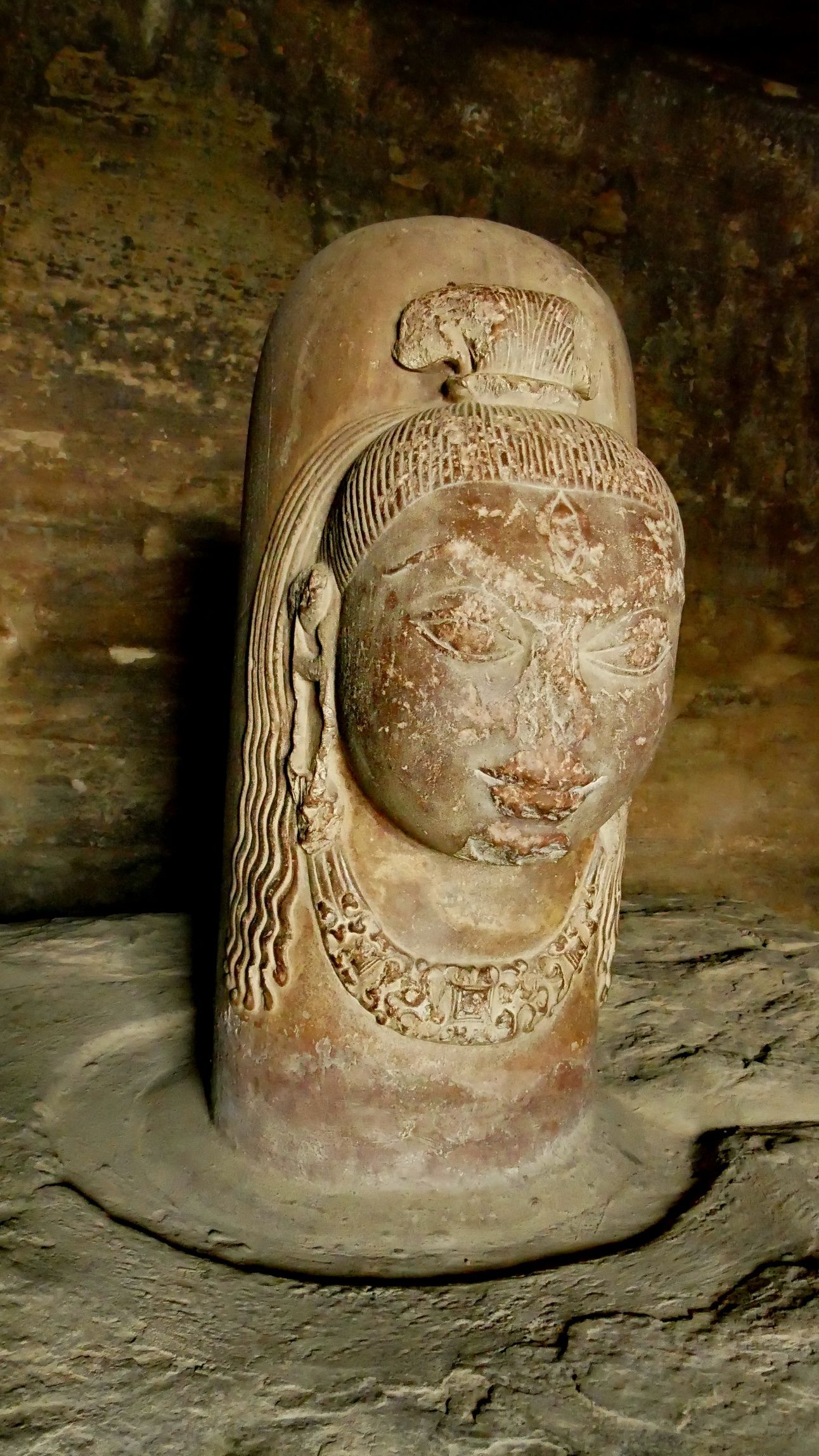
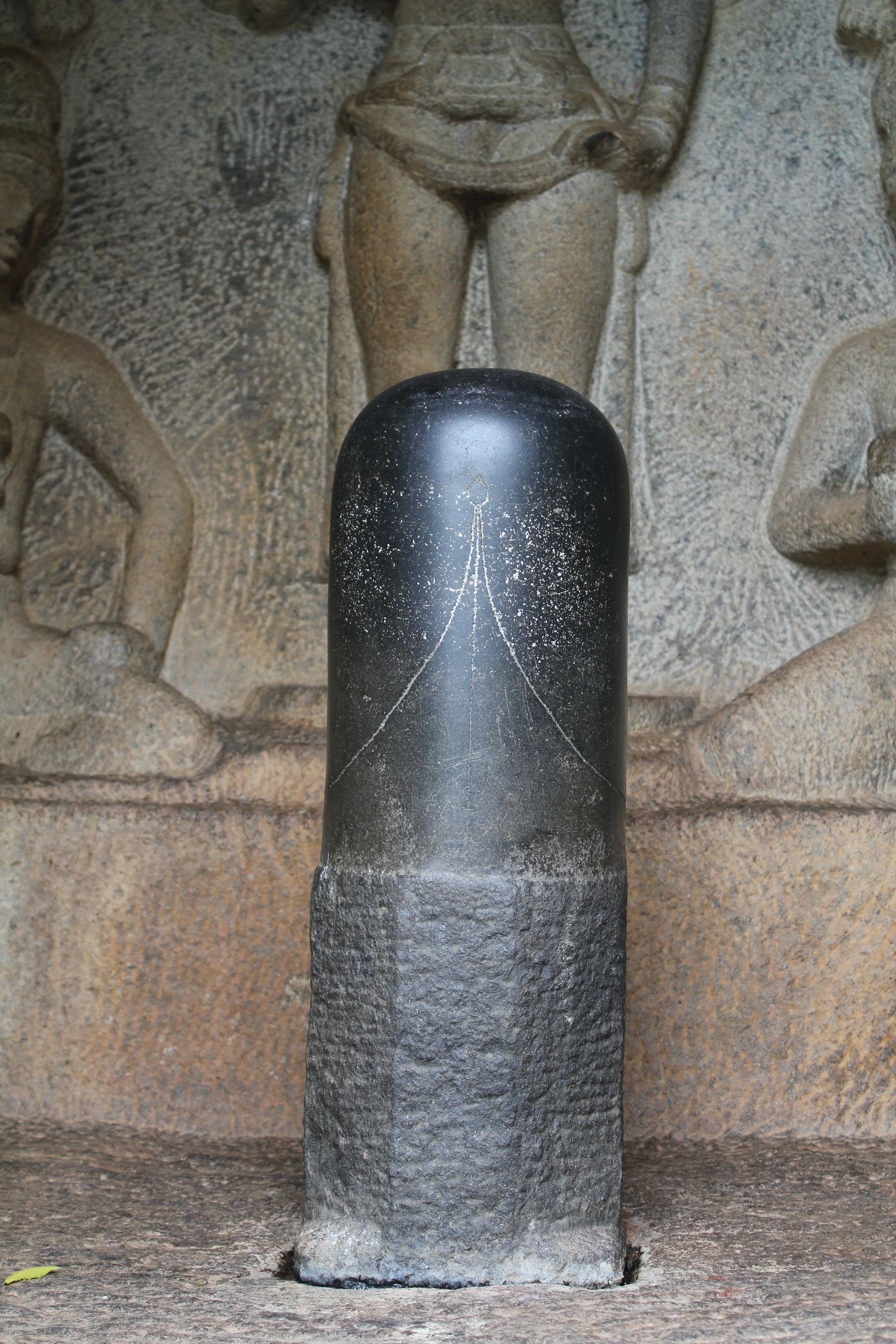
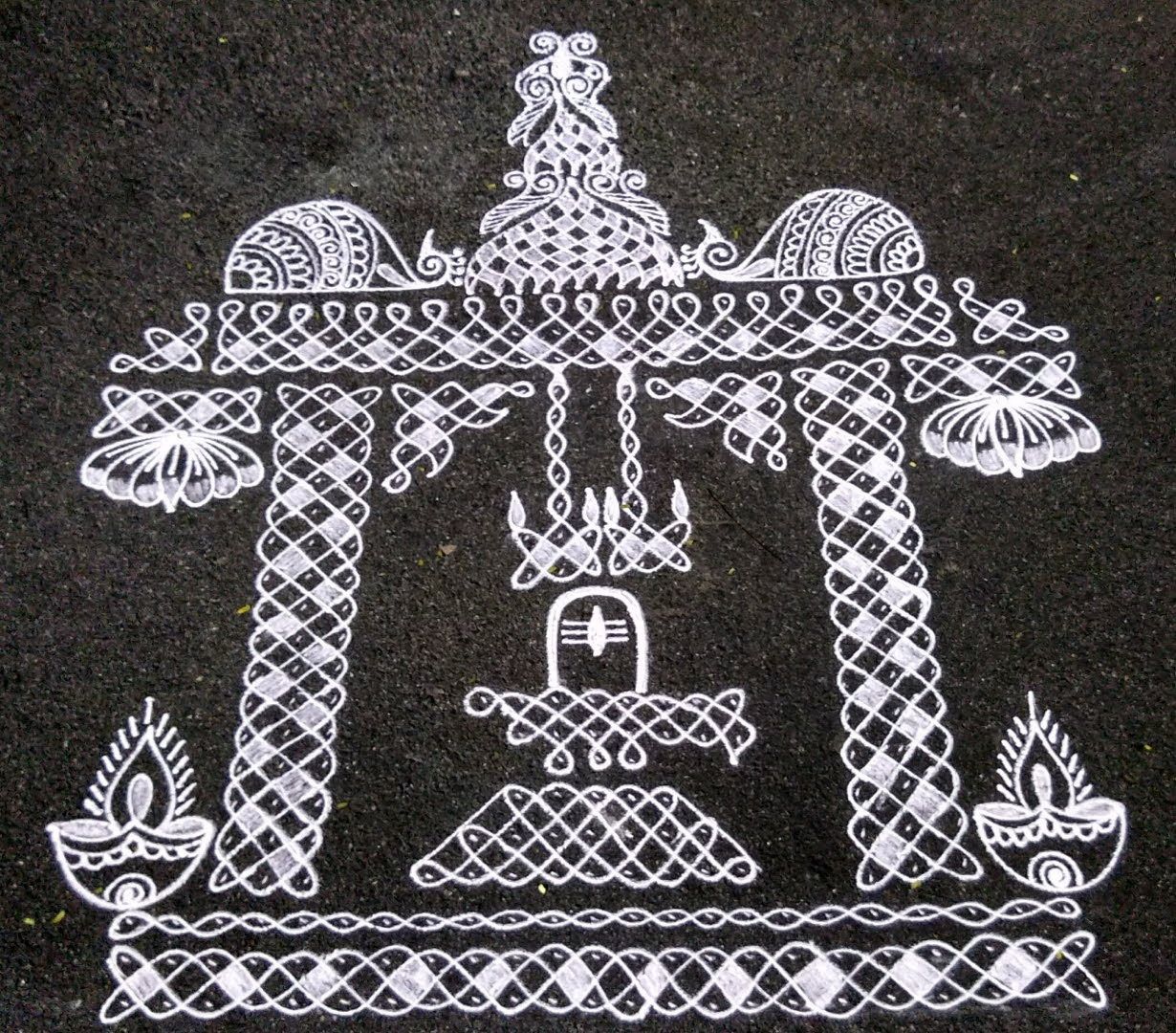
A mythical story from the Linga Purana describes Shiva’s supremacy in this particular form:
“One day Brahma and Vishnu were having an argument over which one of them is more powerful when suddenly an immense pillar of fire emerged from the ocean. Surprised by this apparition, but ready for a challenge, Brahma and Vishnu decided to measure its height. The former took on the form of a goose and flew to the top of the pillar, while the latter became a boar and dove to the bottom of the ocean to reach its base. Neither of them succeeded in finding either end of the infinite pillar. Shiva then suddenly appeared and told them that the pillar is a lingam and symbol of his power. Brahma and Vishnu had no choice but to accept his supremacy.”
It is said to have happened in Tiruvannamalai. The Linga Purana also reveals that during the present yuga, this lingam of fire will be transformed into a mountain so that devotees can experience the metamorphosis of Shiva from kilometres away. The temple at the base of the hill is one of the five Shiva temples where the lingam is worshipped in the form of five basic elements: as earth in Kanchipuram, as water in Thiruvanaikaval, as air in Kalahasti, and as space in Chidambaram, which transcends all the others as it is also dedicated to Shiva Nataraja, the divine Dancer.
In temples, the lingam sits on a pedestal called yoni and symbolises Shakti, the female principle of divine energy.
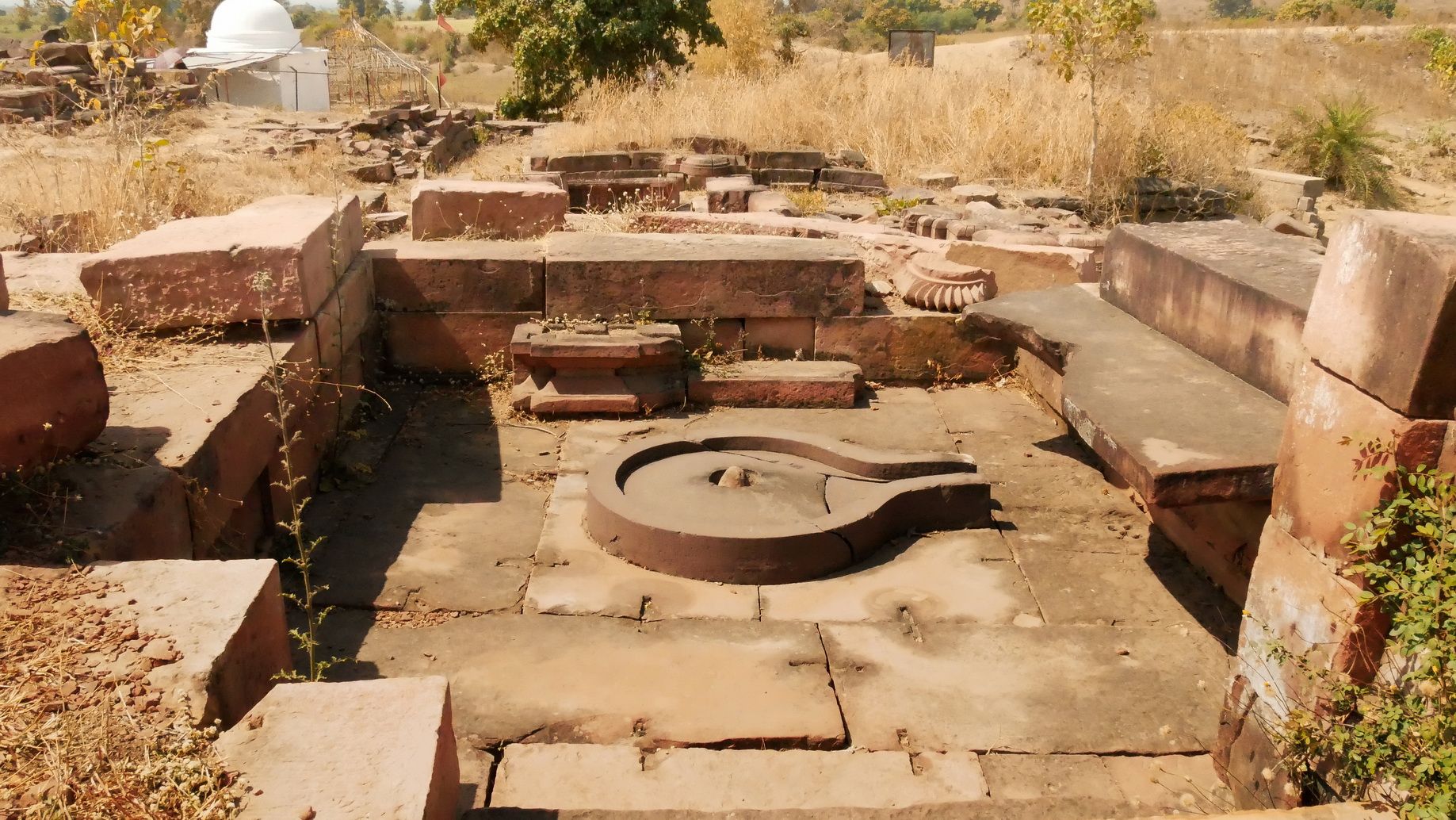
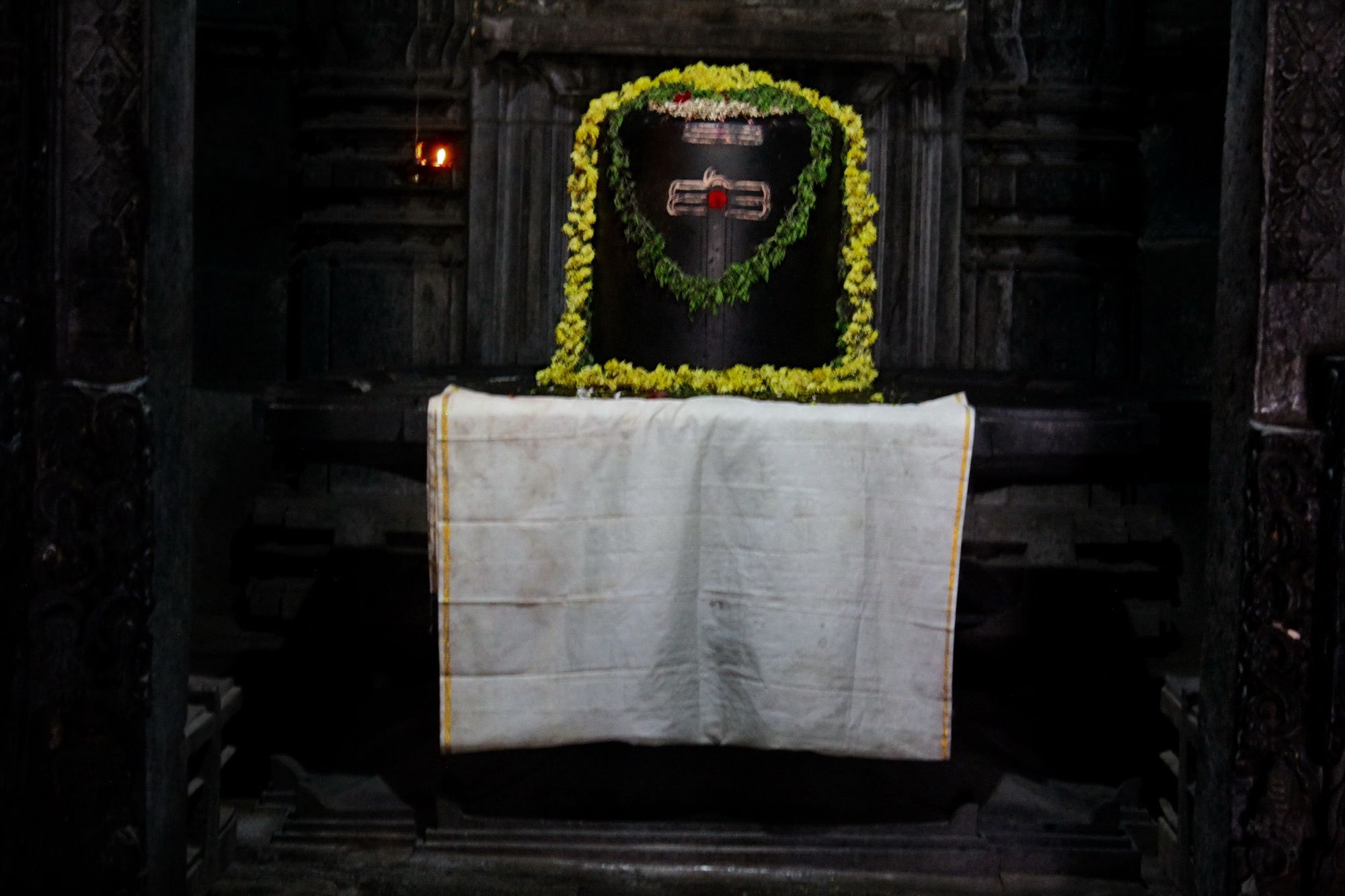
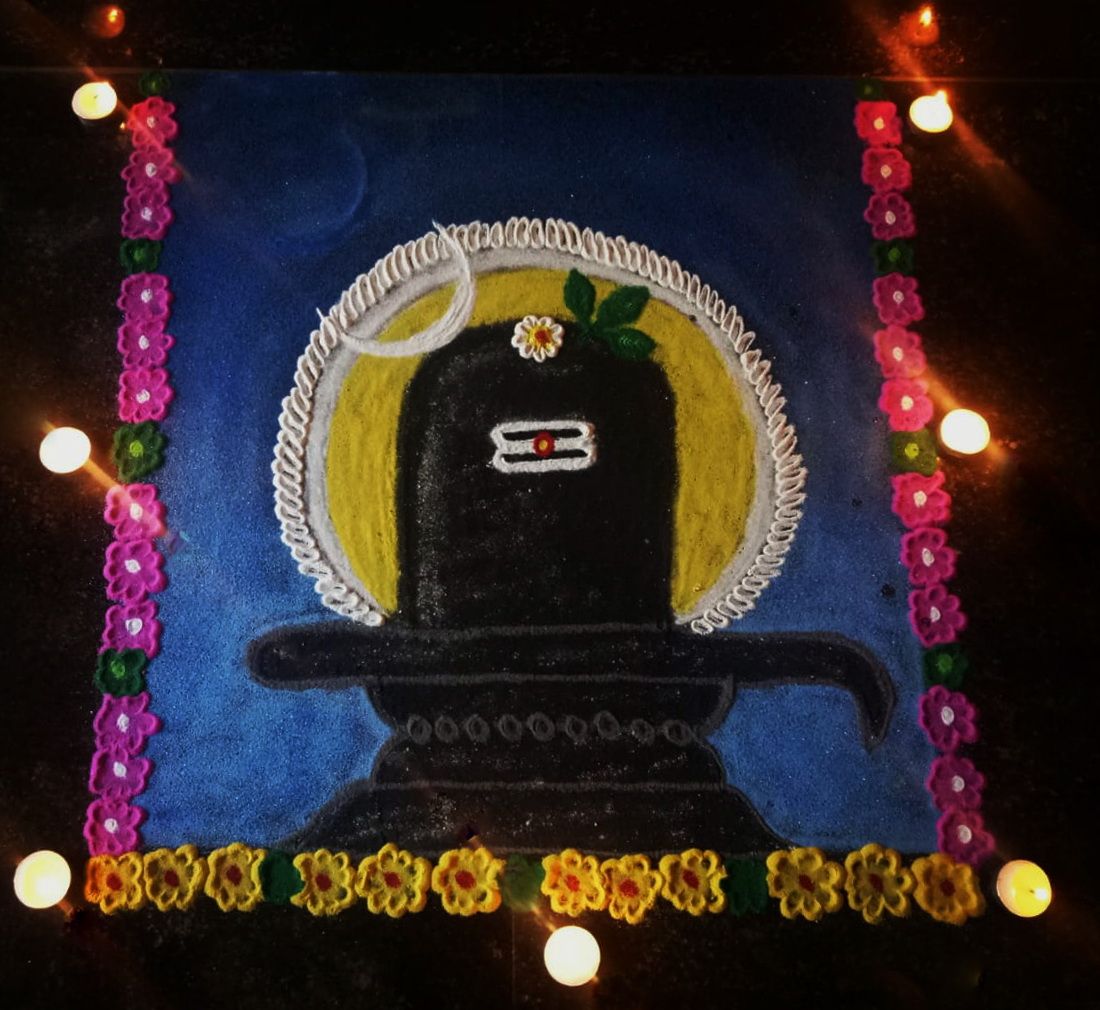
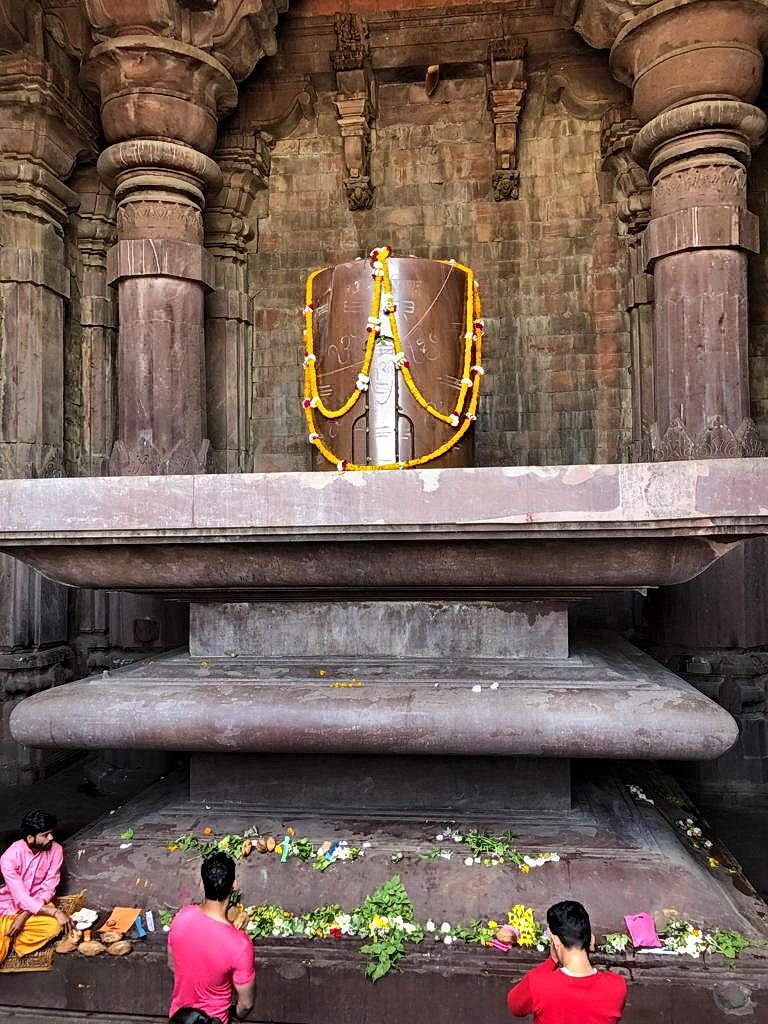
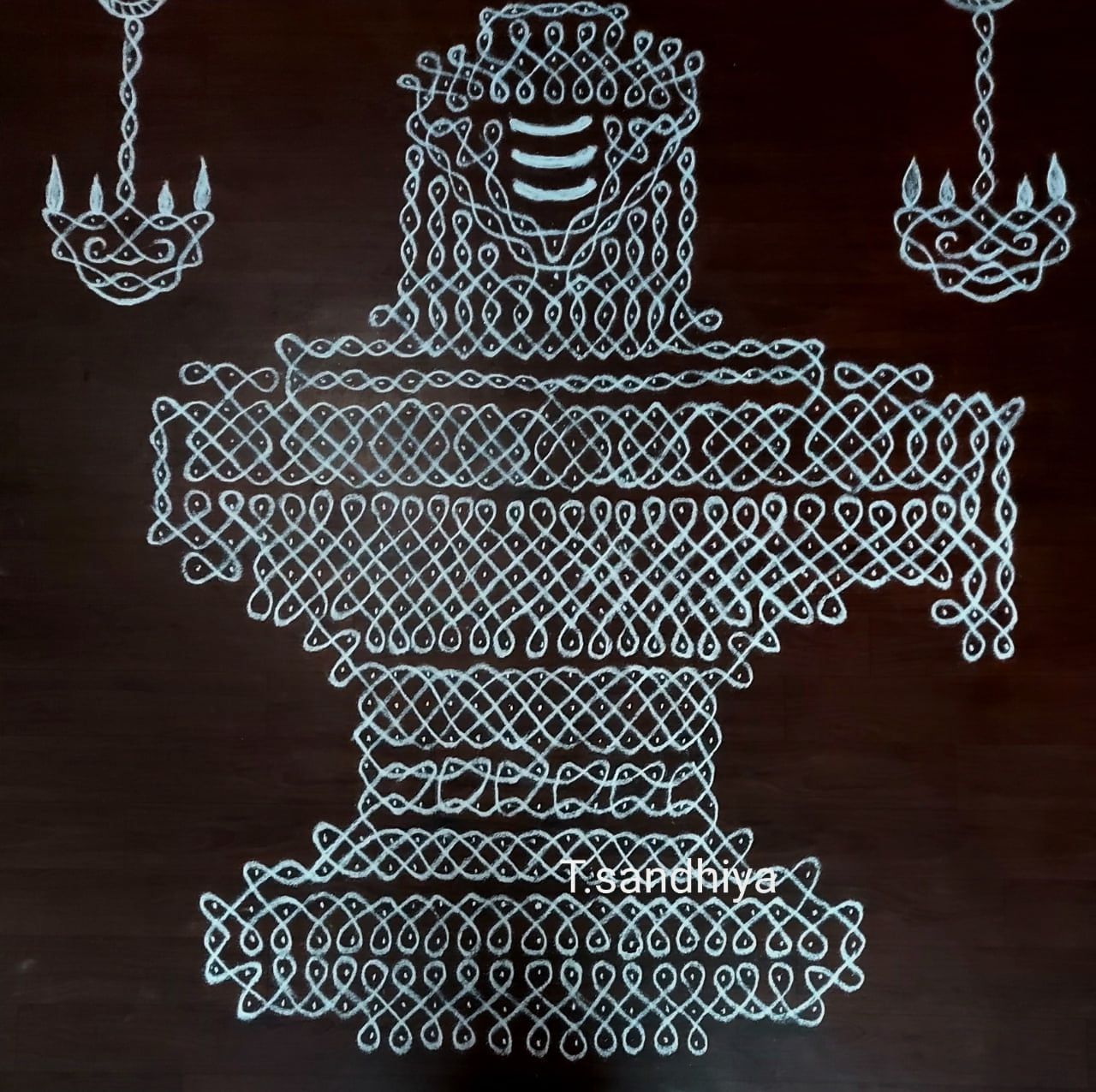
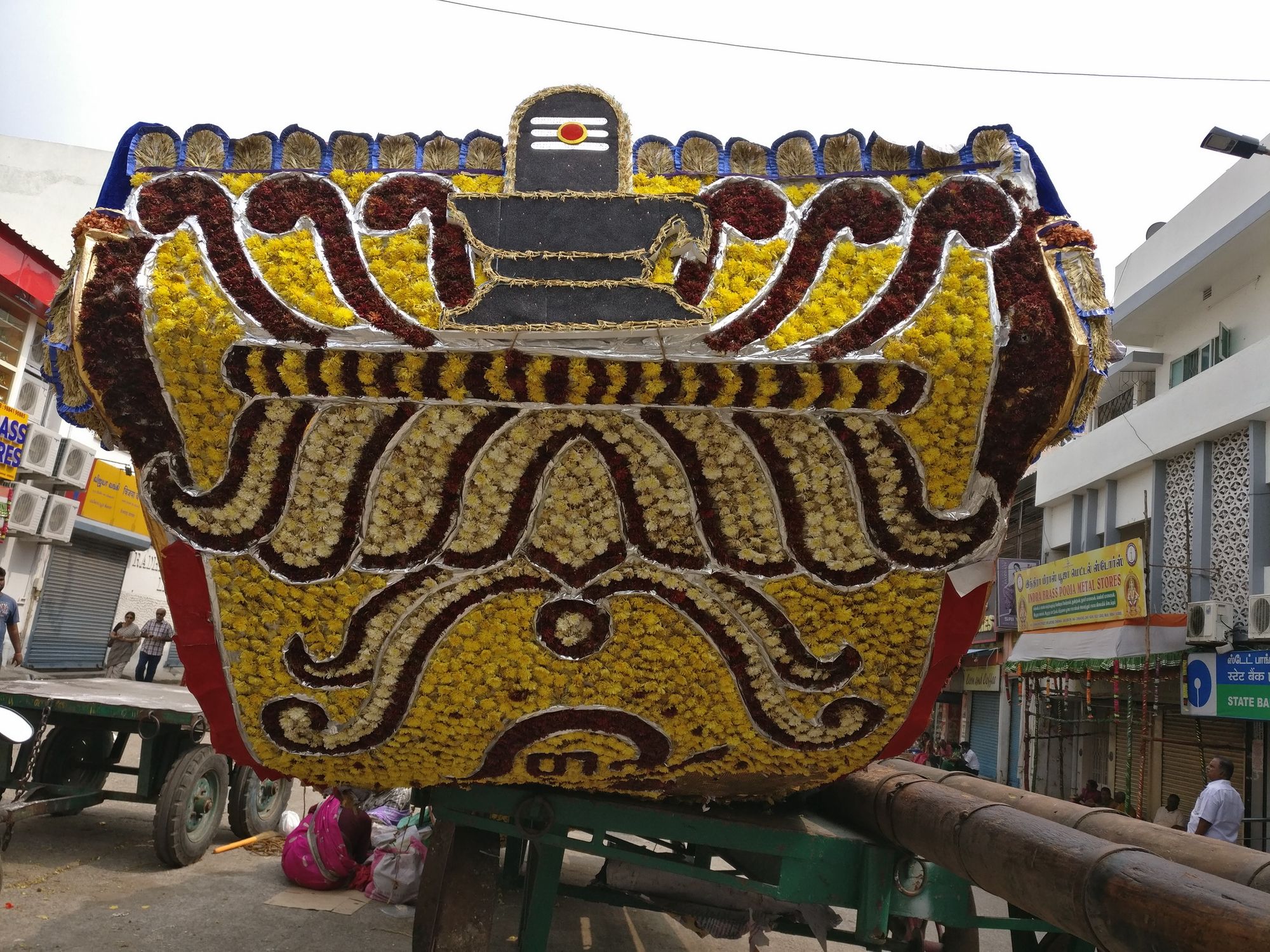

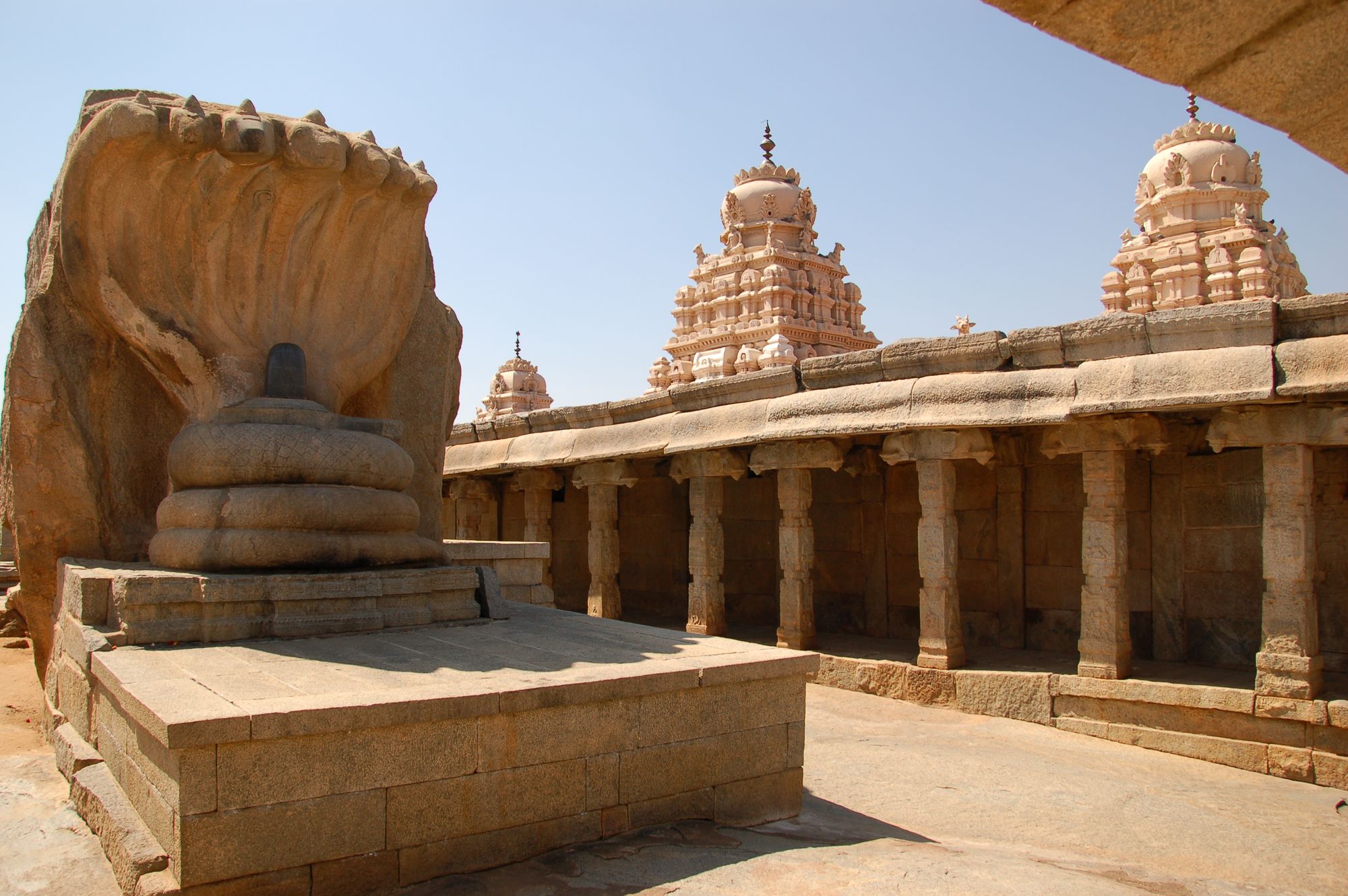
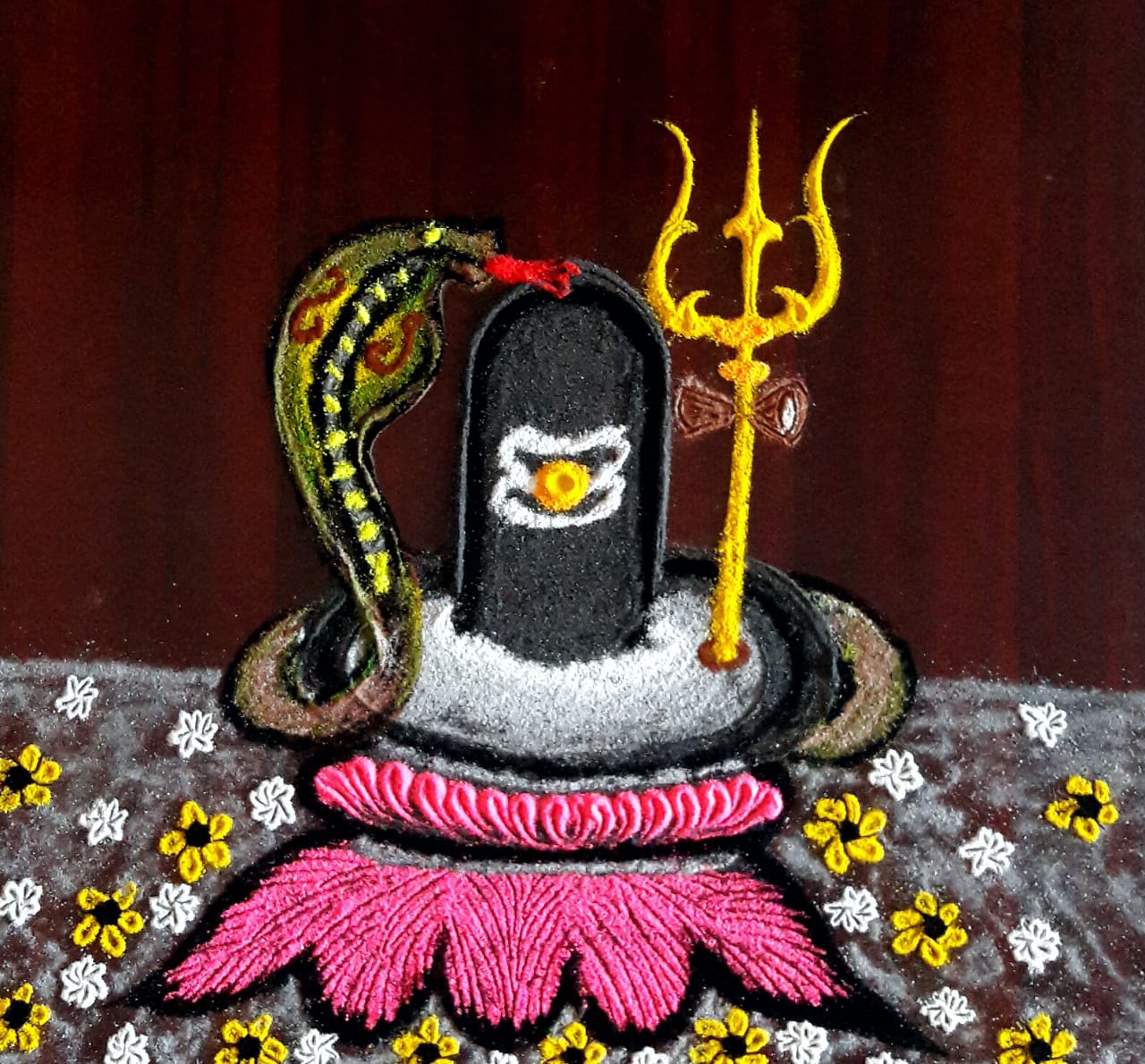
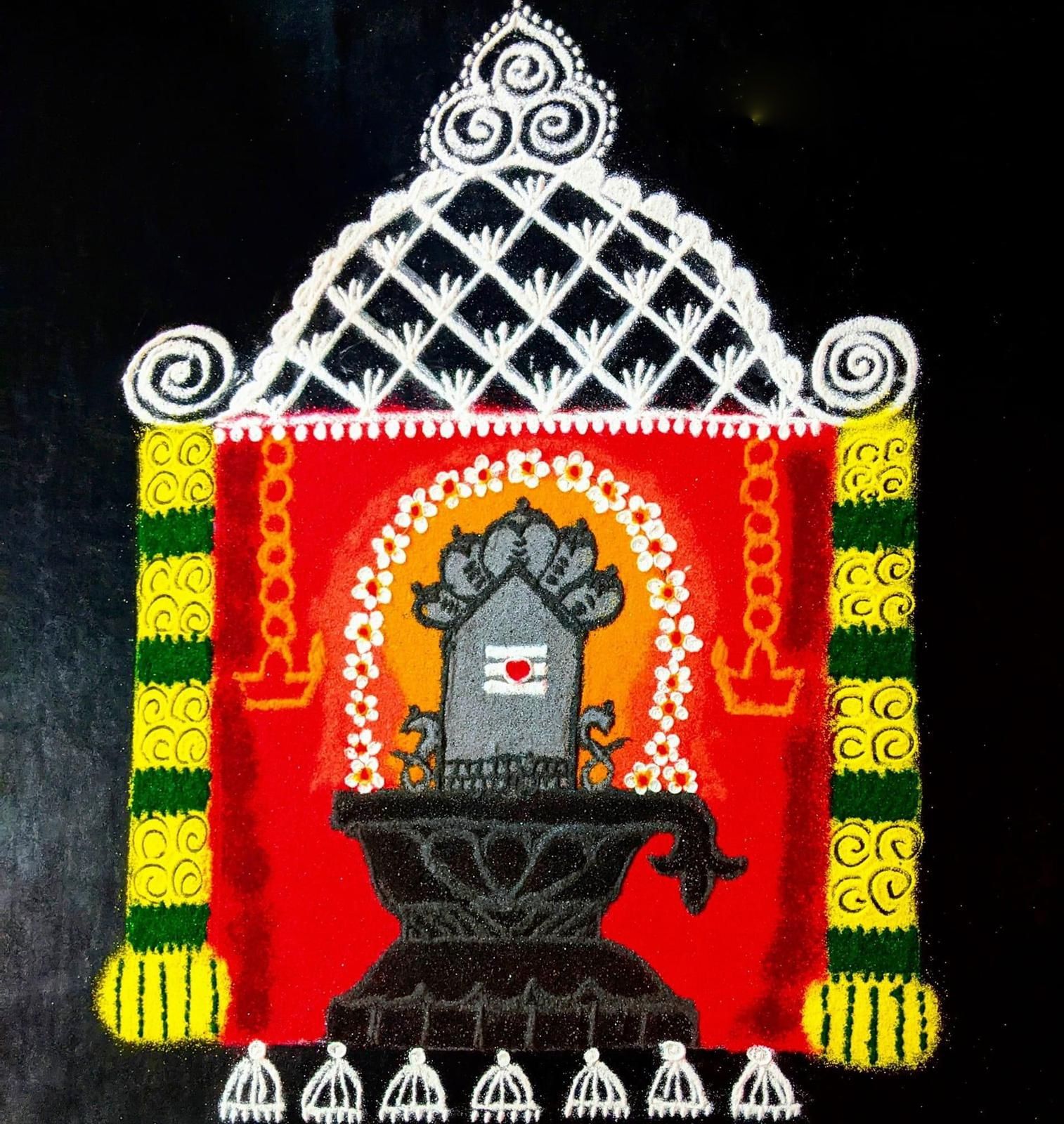

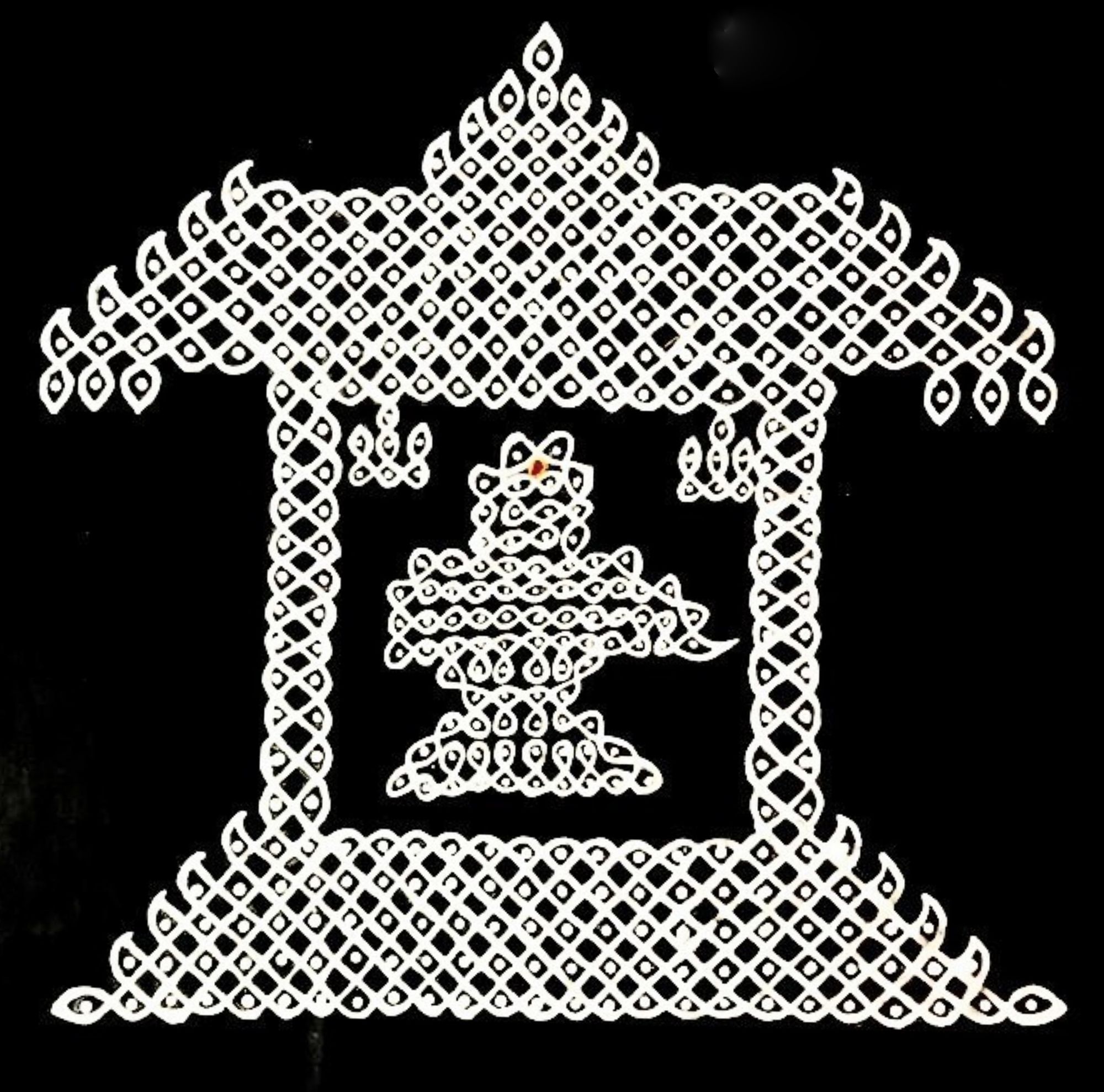
The Jyotirlinga shrines are temples where Shiva appeared as a fiery column of light. Each of the twelve Jyotirlinga temples bear the name of the presiding deity, each considered a different manifestation of Shiva represented as a pillar with no beginning, and no end, thus, symbolising the infinite nature of Shiva. The Epic Ramayana legend related to the Jyotirlinga shrine in Rameswaram is that Rama, the seventh incarnation of Vishnu, prayed Shiva to clear him of the murder of Ravana in Sri Lanka. He directed Hanuman at the head of his army to bring a lingam from the Himalayas. But as he was delayed, and the auspicious astrological time was almost over, Rama decided to create a lingam out of the seashore sand which according to belief, remains to this day the lingam in the sanctum.
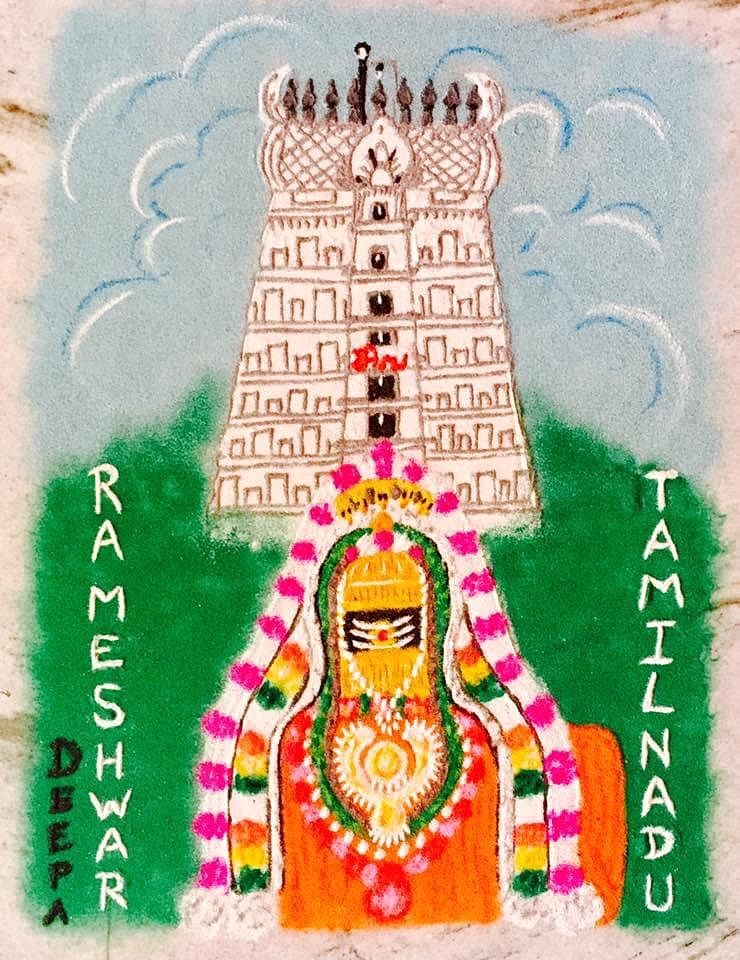
Shiva yantra mandala
Tantric yantras show Shiva, the masculine aspect of Purusha, as a pointed upwards triangle and Shakti, the feminine principle Prakriti as an upside down triangle. The overlapping figures symbolise their union. Yantras are usually associated with a particular deity and are drawn for specific benefits. They are used in rituals, home worship, and worn as talismans. Certains kolam are of this type, they will never be drawn outside but in the puja room with an intention or a solemn vow.
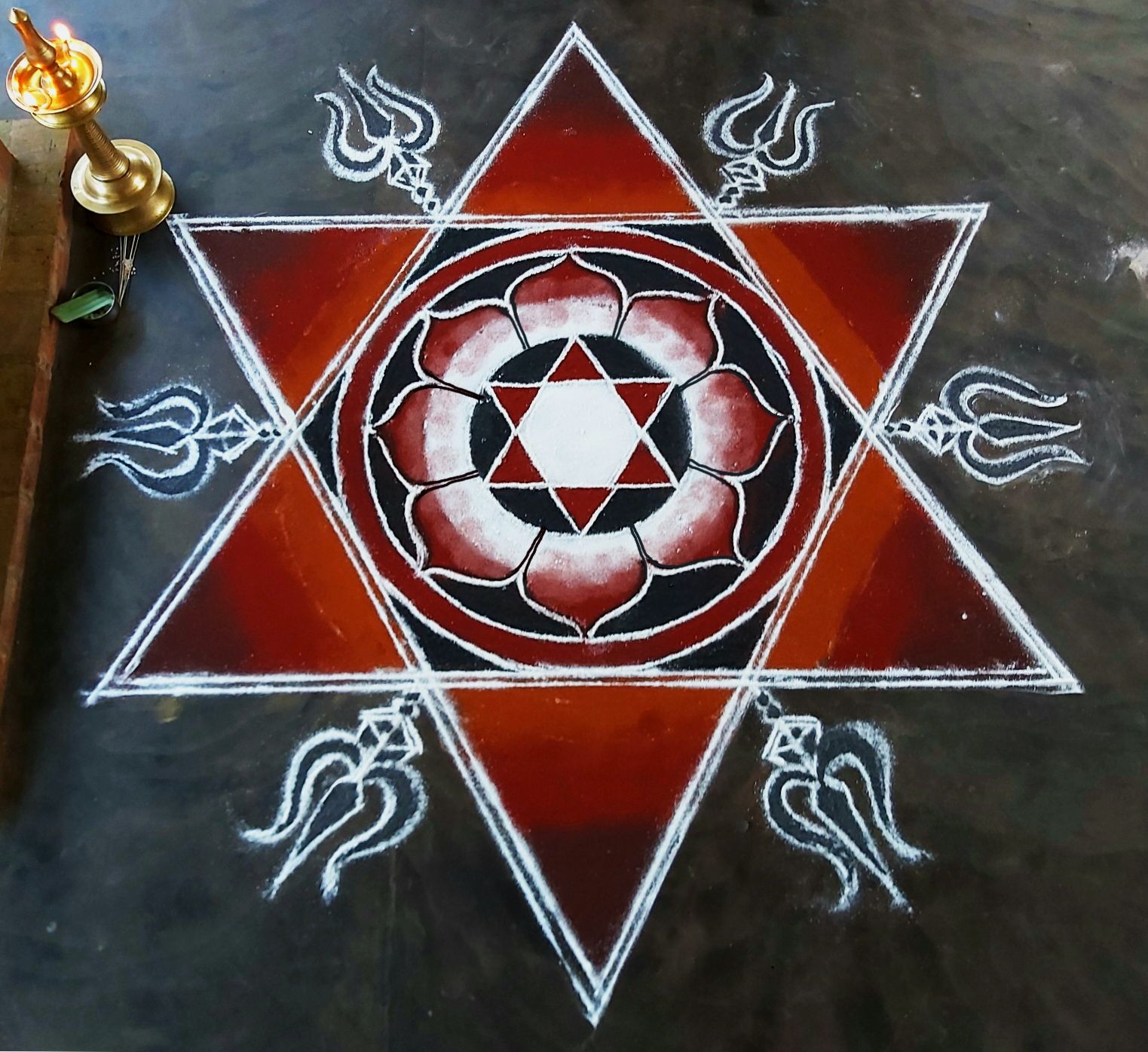
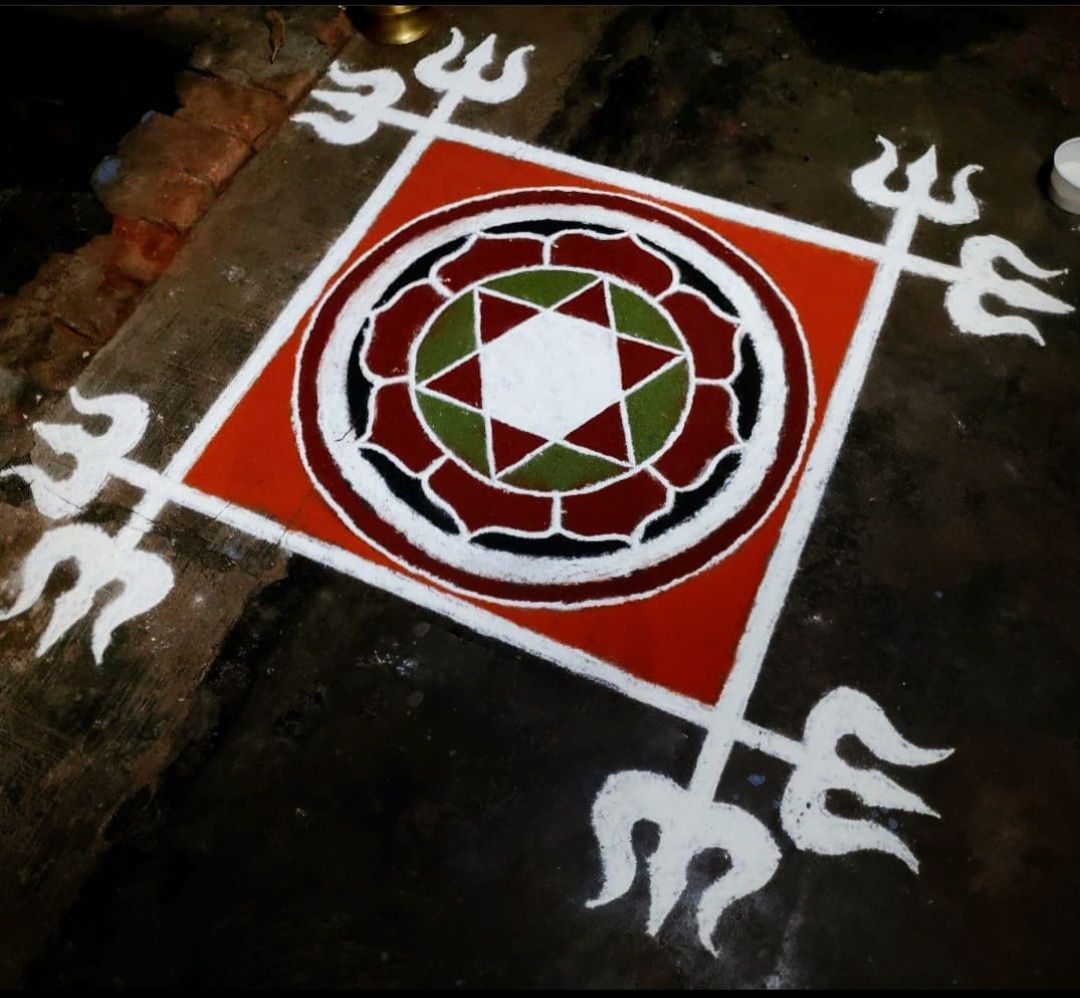
Sharavanabhava kolam
The overlapping triangles are also called sharavanabhava kolam and are drawn for Murugan or Karthikeya, the son of Shiva and Parvati. The month of Adi (mid-July, mid-August) is considered highly auspicious to worship Murugan. If indoors in the puja room, women draw two triangles and write OM in the center, and the mantra Sa-Ra-Va-Na-Bha-Va (ச-ர-வ-ண-ப-வ) on the tip of the two triangles. Outside one may find various extensions around the two triangles without the sacred letters.
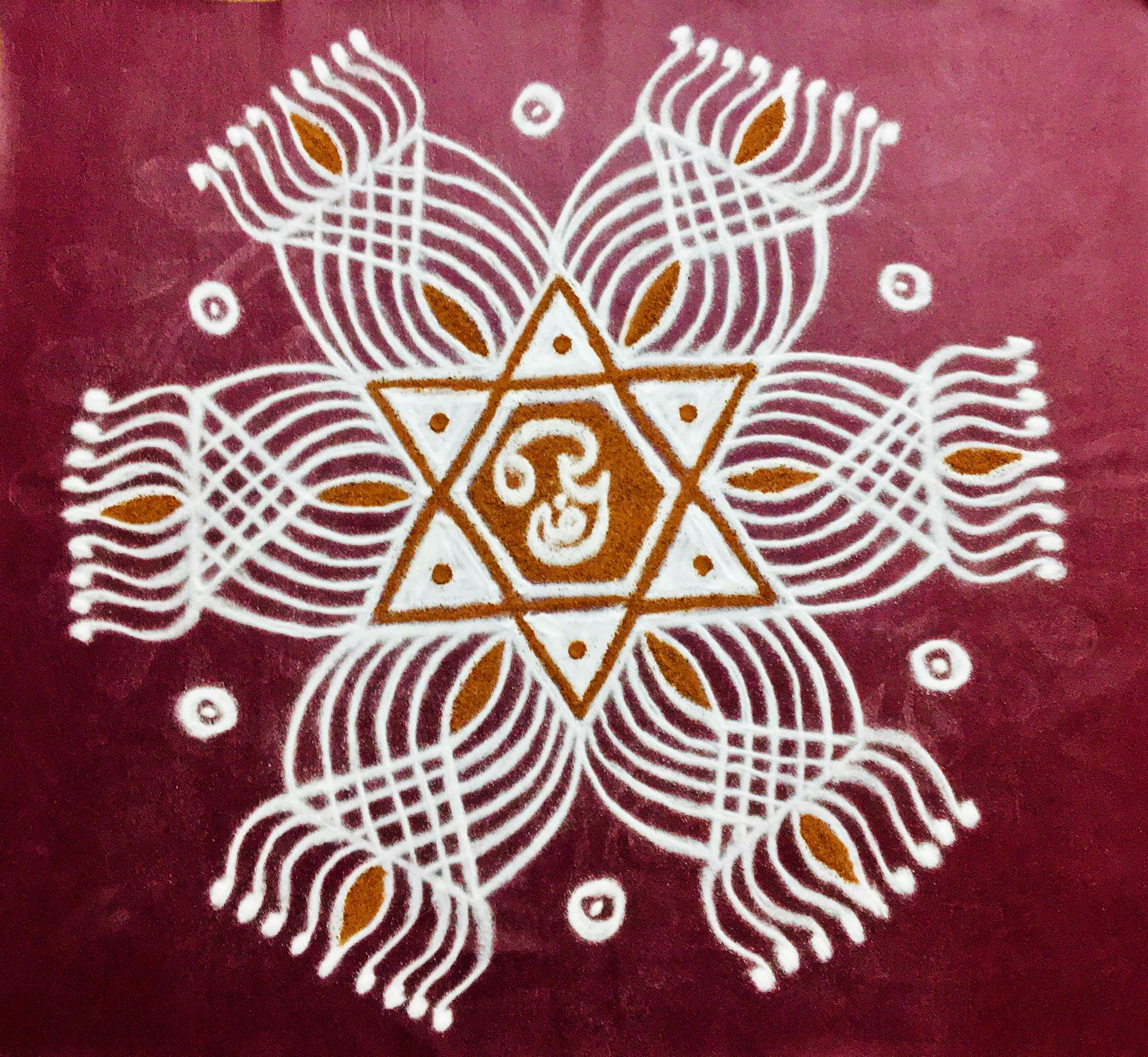
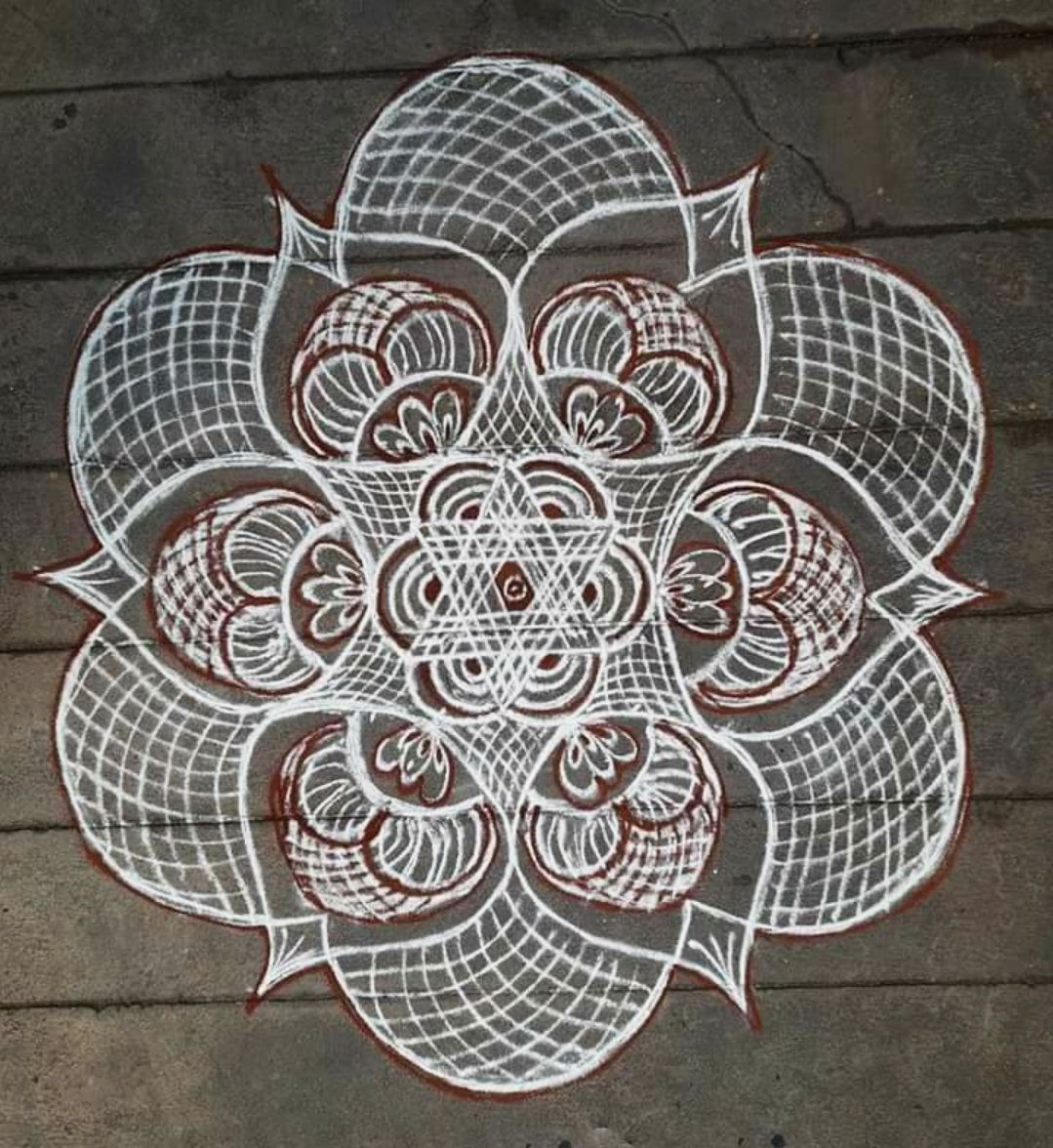
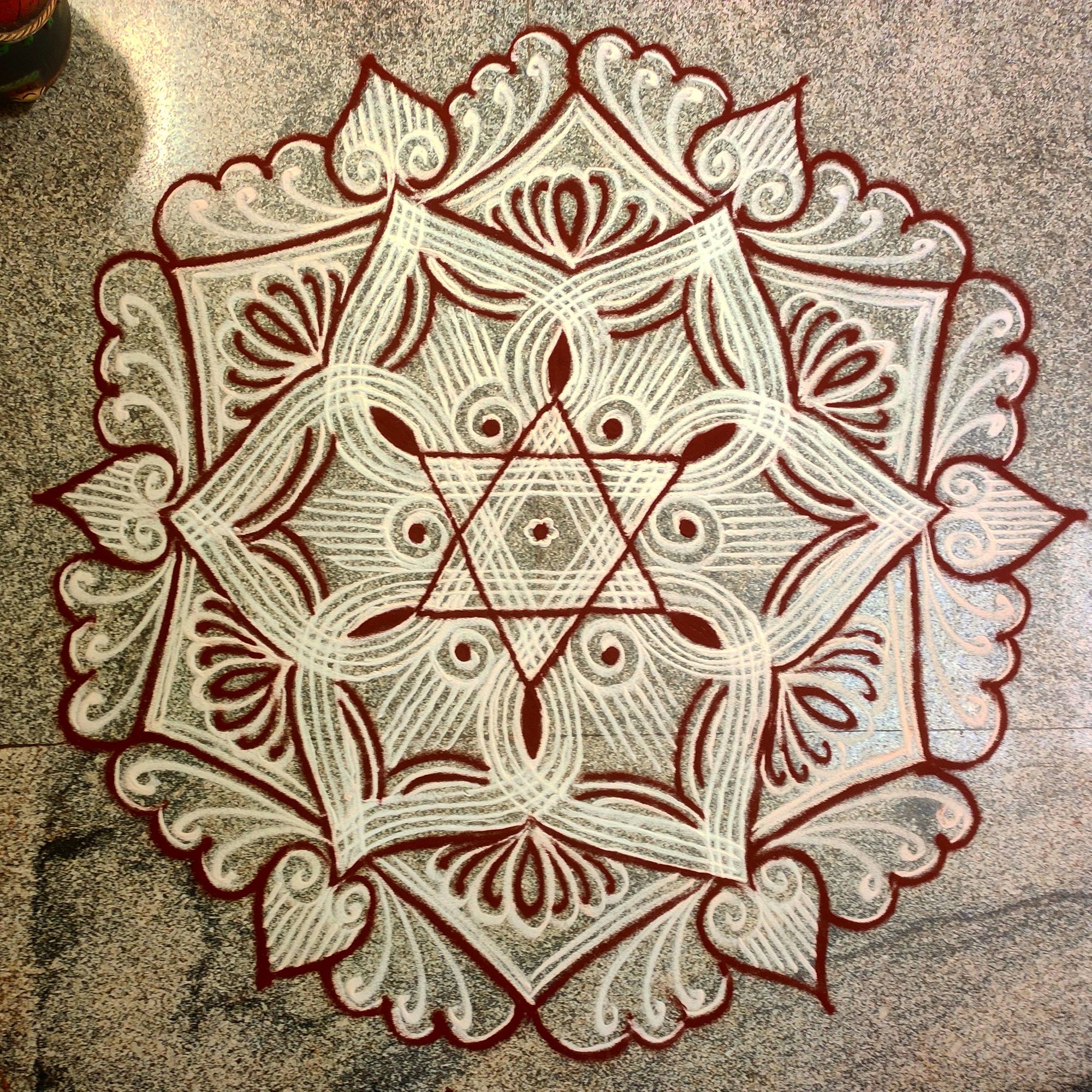
Shivaratri at Lakshmi's home
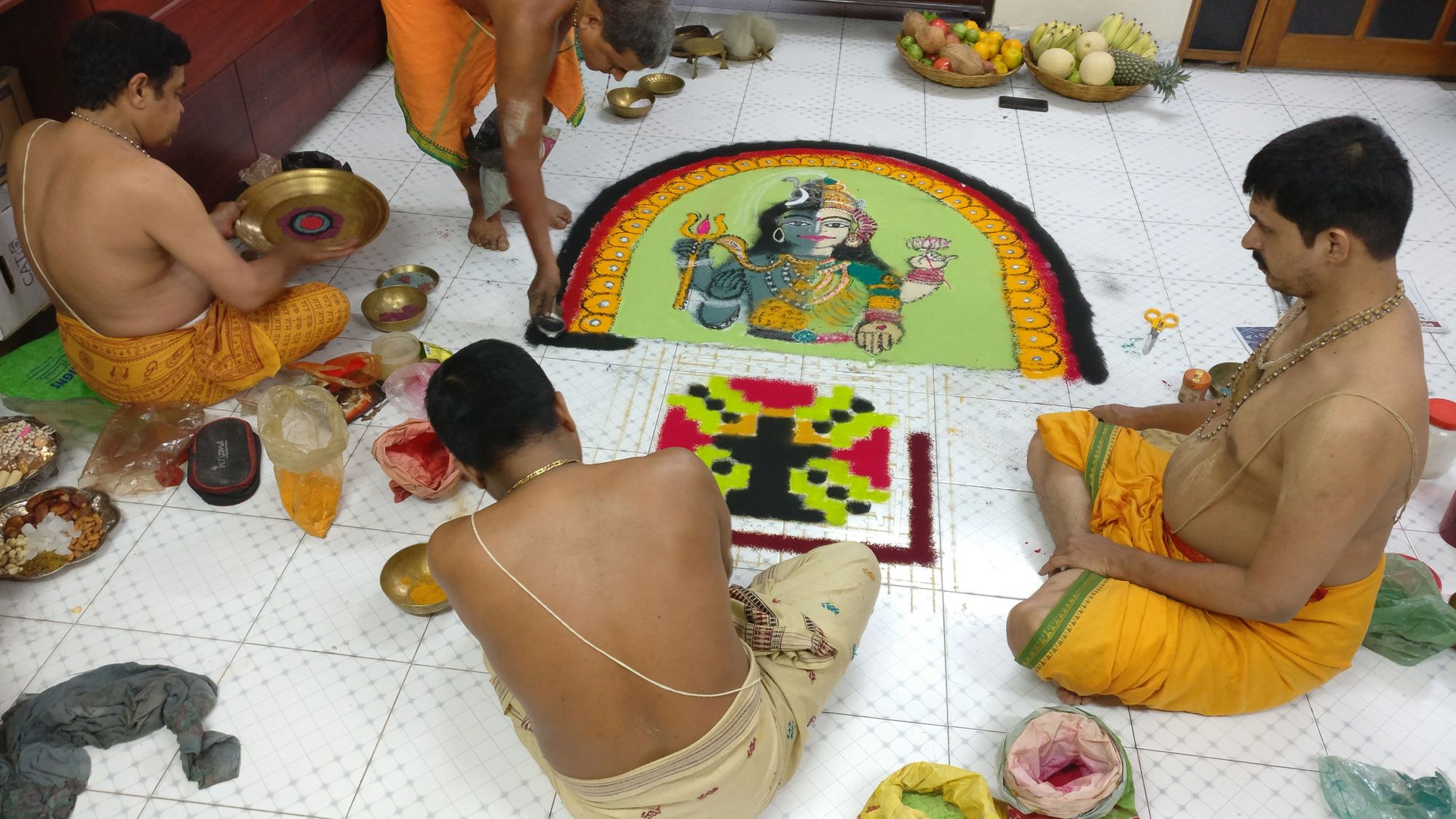
Ekadasa Rudra Parayanam is the chanting of Sri Rudram a powerful ancient hymn in praise of god Shiva. Abhishekam or sacred bath, garlands, and jewellery is offered to him. He is then honoured with the chanting of 108 descriptive attributes. In general it takes place once in a month for good health, peace of mind and pure joy for the family.

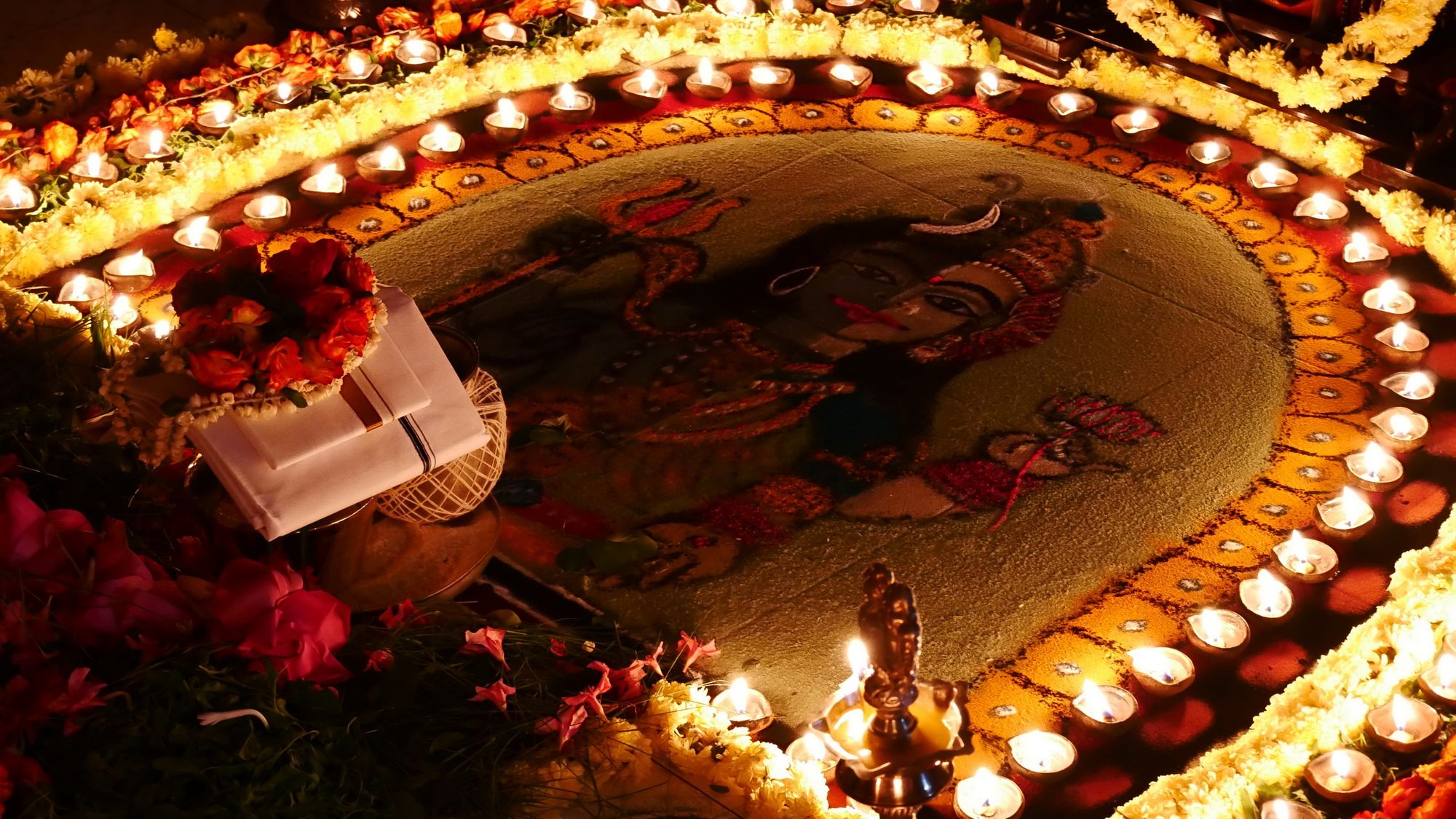
Previous article:
Shivaratri, the night of Shiva — part 1
If you feel like drawing, follow the dots of the lingam design and draw them.
